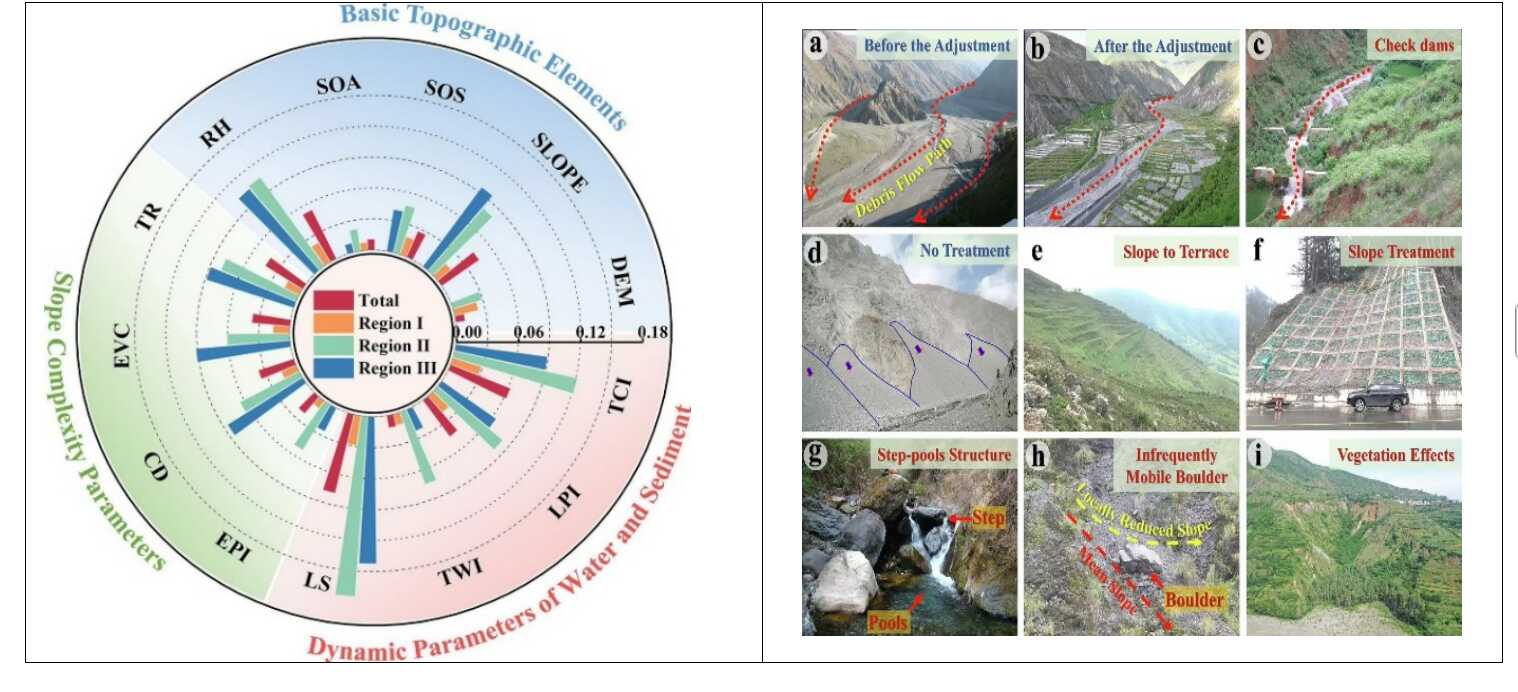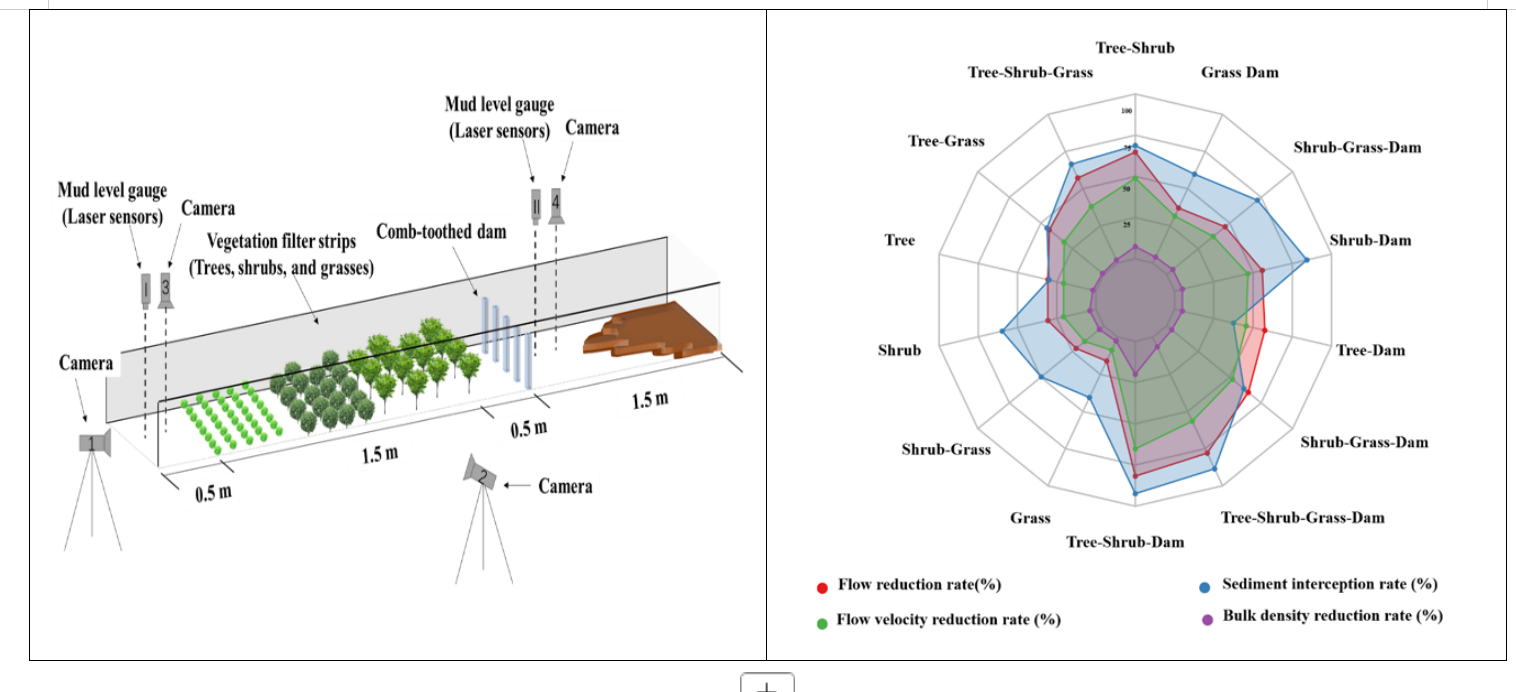In current debris flow prevention and control, traditional engineering measures are costly and cause significant ecological disruption. Therefore, there is an urgent need to explore low-cost methods based on nature-based solutions to achieve soil and water conservation and disaster prevention and control. To address the issues of unclear benefits and unclear synergistic disaster reduction models that rely on natural materials, and eco-geotechnical measures, associate Prof. Songtang He and his collaborators proposed hazard reduction models based on natural micro-topography, and segmented eco-geotechnical measures layout.
From a watershed scale analysis, the key driving factors influencing sediment transport in natural micro-topography were examined. The study utilized high-resolution DEM data and comprehensively applied the Sediment Connectivity Index (IC), Digital Terrain Analysis (DTA), GeoDetector, and Random Forest Model (RF) to quantitatively assess the impact of 13 types of topographic indicators on sediment connectivity. The results showed that hydrodynamic-related factors (such as the LS factor and TWI) dominate the spatial differences in sediment connectivity, and there are significant synergistic interactions between the indicators. From an experimental perspective, the study elucidated the mechanisms and benefits of an ecological-geotechnical measure combining segmented vegetation layout with comb dams to intercept debris flows. Through field surveys and flume experiments, we determined the optimal row spacing and stem spacing for segmented vegetation. Additionally, we studied various combination models composed of vegetation filter strips and comb dams to elucidate their respective benefits and potential mechanisms in intercepting debris flows. In addition, we incorporated vegetation layout parameters (e.g., plant spacing, row spacing, number of rows), vegetation morphological parameters (e.g., diameter), as well as channel bed slope and roughness, to establish equations for flow velocity reduction and sediment interception.
The aforementioned work represents an initial exploration of the concept of nature-based solutions for debris flow control and prevention, with the potential to break through existing disaster prevention and mitigation concepts and models, and drive innovation in comprehensive disaster reduction science and technology. These achievements were published in the Journal of Hydrology and Ecological Engineering with the titles “Unraveling the impacts of geomorphic indicators on sediment connectivity in a typical debris-flow prone small watershed” and “Mechanisms and benefits of segmented eco-geotechnical measures for debris flow mitigation” respectively, and supported by the National Key Research and Development Program (2024YFC3012702; 2024YFF1307801; 2024YFF1307800), the Chinese Academy of Sciences Youth Innovation Promotion Association (2023389), the National Natural Science Foundation of China (42201094; 42371014), and the China Scholarship Council Visiting Scholar Program (202404910203, 202404910485).

(Image by HE Songtang)

(Image by HE Songtang)
